Seakeeper 4 / 4.5 Installation Manual (90762-1)
2.0 Mechanical Installation
2.1 Mechanical Installation Introduction
The Seakeeper 4.5 can produce loads up to 2989 lbs (13.30 kN) at each mount. These forces should be considered to be acting simultaneously, fully reversing, and will repeat an infinite number of times. Careful consideration should be given to foundation design to ensure it can transfer these loads into the hull. These loads do NOT include vessel motion accelerations, such as vertical slam loads, which can be significant for higher-speed vessels. The responsible party for designing the supporting structure (boatbuilder, installer, or hired sub-contractor) must accommodate the above forces plus a reasonable safety factor. Seakeeper recommends a minimum safety factor of 3.0 (yielding a Safety Margin of 2.0).
It is assumed that the installer is familiar with installations using mechanical fasteners to marine structures and has performed structural analysis to ensure the structure to which the Seakeeper mounts can adequately transfer the loads the Seakeeper creates into the hull structure. If the installer has any doubt about the ability of the structure to transfer the loads to the hull, then a licensed naval architect or marine engineer should be contacted to do a structural analysis.
The installer should review the following list of reference drawings to ensure the installation procedure and structural requirements are fully understood.
Reference Documents:
- 90737 – Seakeeper 4.5 Hardware Scope of Supply
- 90726 – Seakeeper 4.5 Bolt-In Installation Drawing
- 90736 – Seakeeper 4.5 Generic Installation Guide
- 90803 – Seakeeper 4.5 Bolt-In Clearances
- 90804 – Seakeeper 4 / 4.5 Blind-Hole Installation Kit
- 90805 – Seakeeper 4 / 4.5 Thru-Hole Installation Kit
- 90819 – Seakeeper 4.5 Installation Template
2.2 Selection of Installation Location

Seakeeper can only assess installation location regarding its impact on Seakeeper operation and serviceability. Seakeeper cannot determine how the installation location will affect the vessel’s static or directional stability other than cyclic roll reduction. The Installer is responsible for considering the Seakeeper‘s effect on the CG location, trim, overall stability, and vessel performance.
Selection of mounting location of Seakeeper should consider the following desirable features:
- Consider overhead access or sufficient clearance for removal / re-installation of the Seakeeper for an overhaul in future years. Also, provide adequate clearance for maintenance, as shown in Figures 1 and 2 below.
- The minimum service clearances shown are based on the size of serviceable components and tools required for removal and replacement of these components. The clearances do not consider how the technician will be positioned for access to these areas. Access for a technician must be considered by the installer.
- The clearance and access requirements do not need to be permanent and can be provided via hatches, removable panels, or other temporary means where applicable.
- The installer/designer should consider all these factors for serviceability when defining the installation arrangement.
- Top down access must be incorporated into installation design to allow for adequate regular maintenance, service, and repair.
- The Seakeeper should be installed in a dry space to minimize the effects of corrosion.
- The Seakeeper should be installed near vessel’s longitudinal center of gravity (LCG) to minimize the effects on trim and performance in various loading conditions.
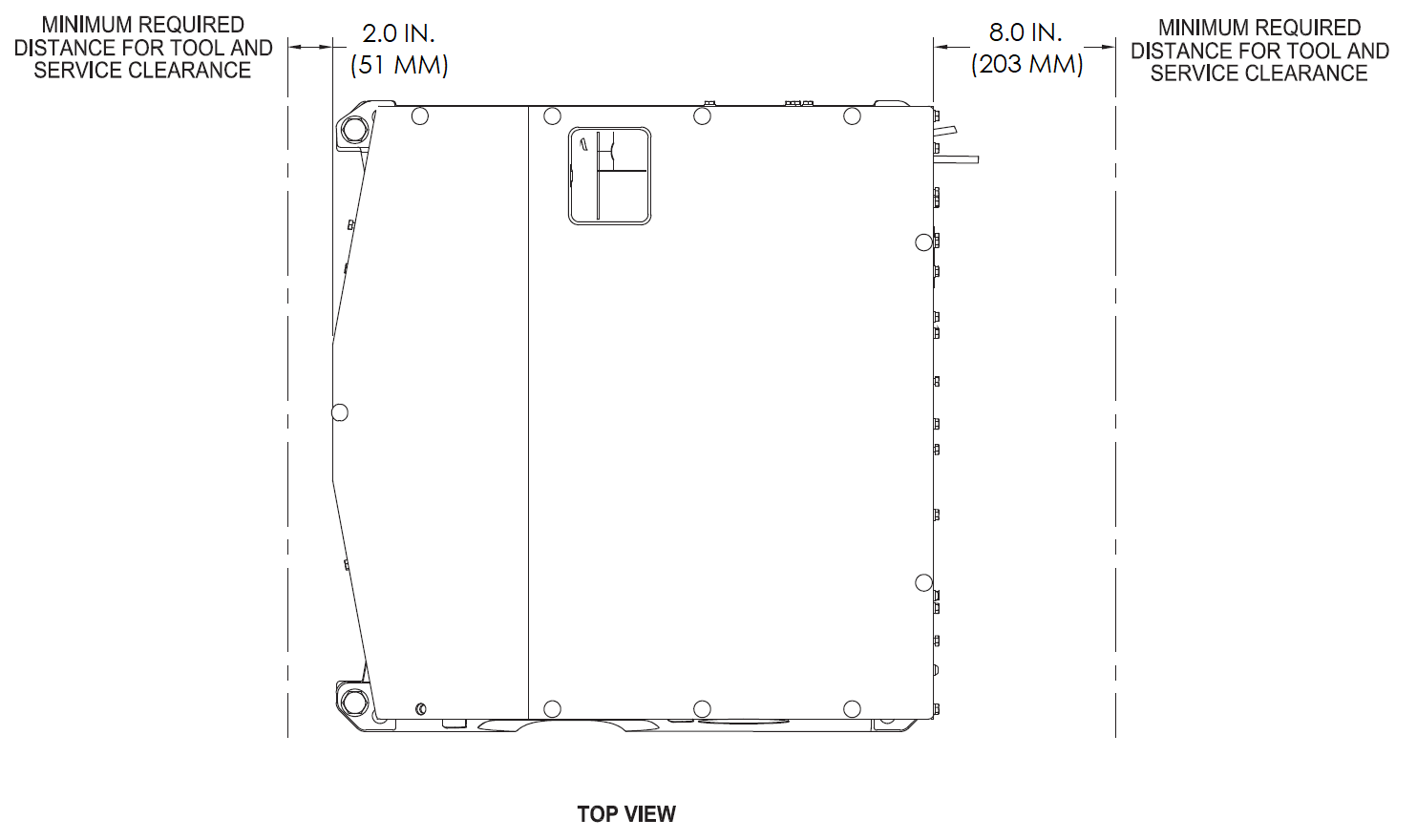
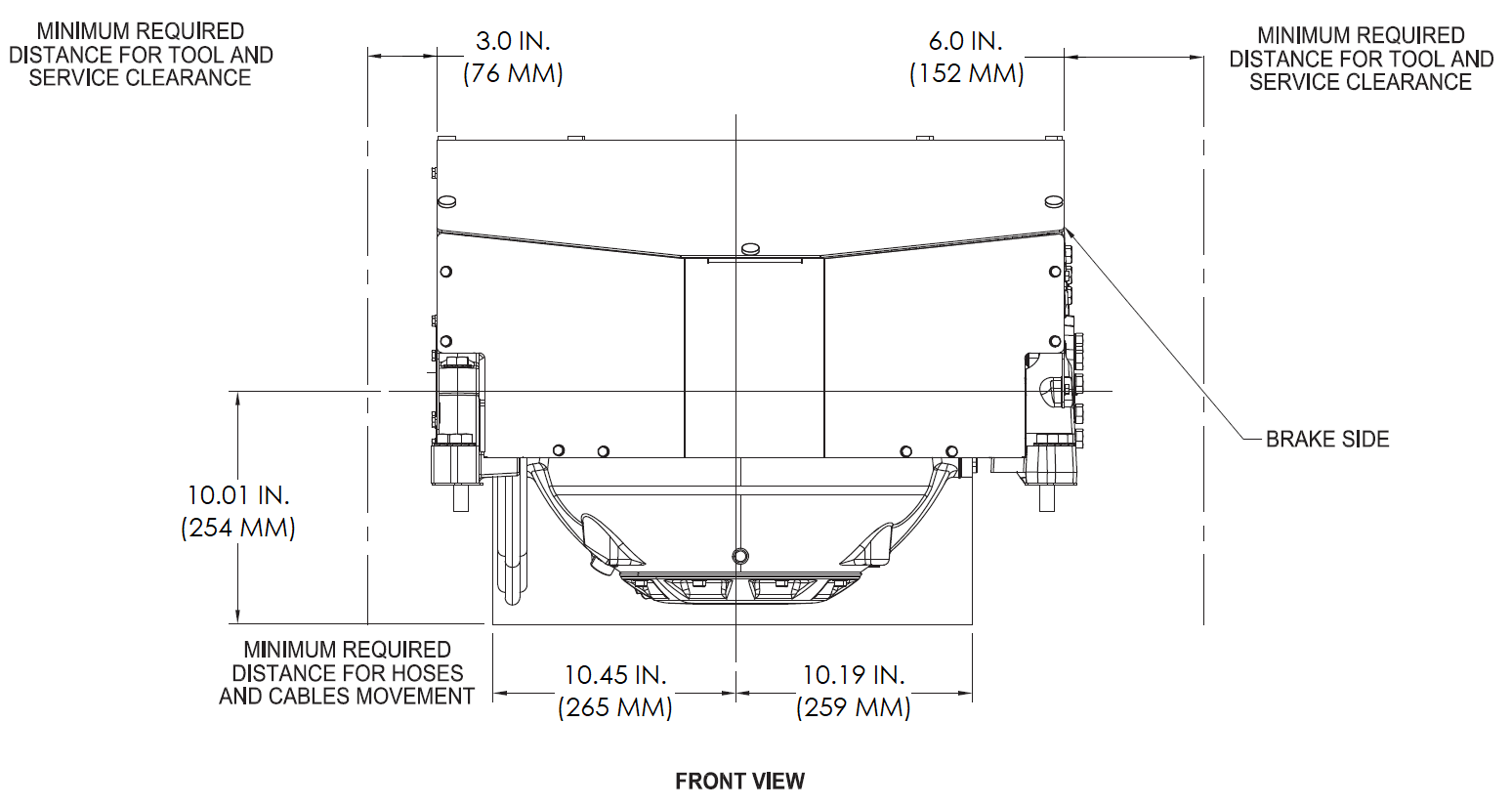

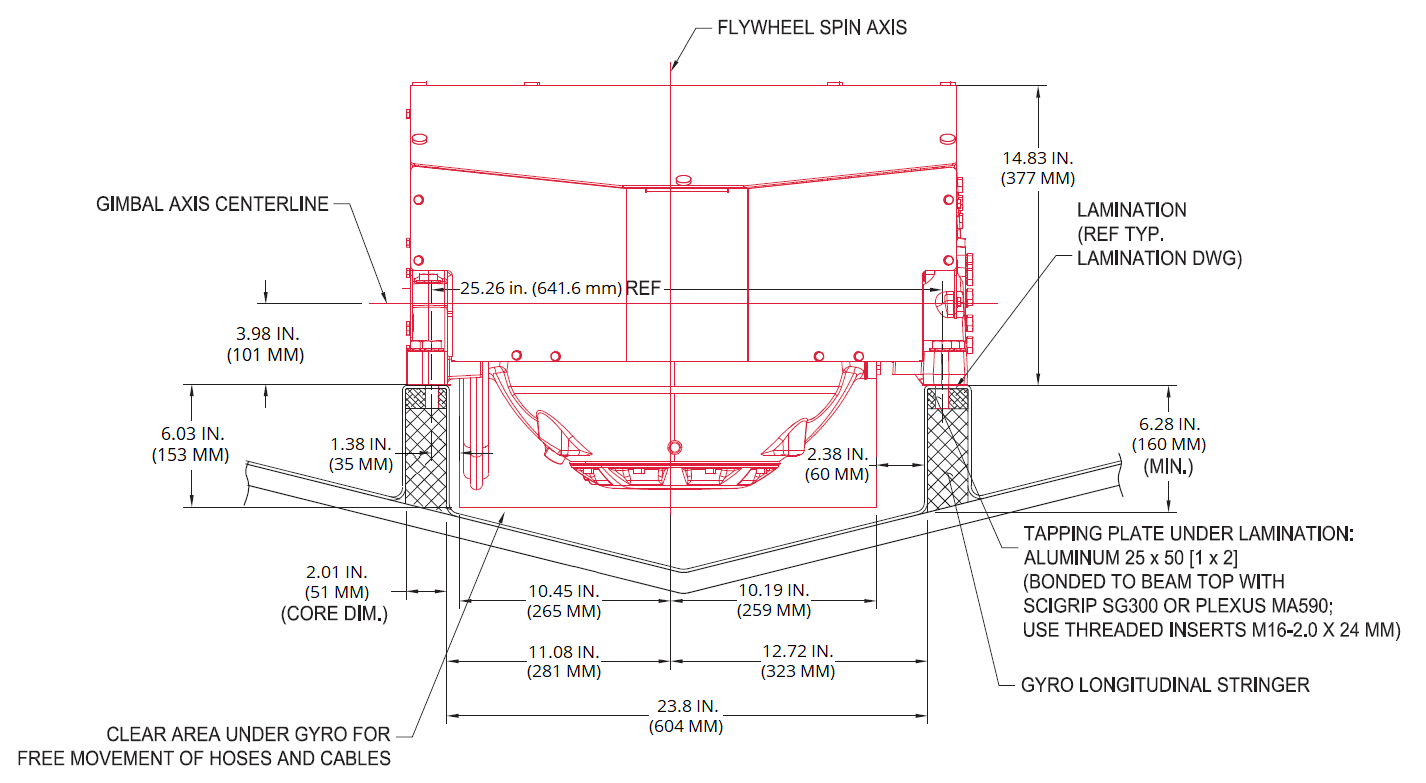
2.2.1 Noise / Soundproofing
Seakeeper noise has been measured under steady state conditions (no wave load) in Seakeeper‘s Engineering Lab and in our Factory Demo Boat. The steady state noise is typically <72 dBC at 1 meter. As the frequencies emitting the highest sound pressures are low (like other marine machinery), it is recommended that the
Seakeeper be installed in a machinery space that is already treated with soundproofing.
2.3 Bolt-In Installation
2.3.1 Preparation of Boat Structure
The Seakeeper Drawing No. 90736, Seakeeper 4.5 Generic Installation Guide shows various structural arrangements to support the installation of the Seakeeper 4 / 4.5. The Generic Installation Guide offers above and below deck installation arrangements with fiber reinforced plastic (FRP) and aluminum structures, which should provide solutions for most vessels. The Seakeeper 4 / 4.5 is affixed to the hull structure via eight bolts in the Seakeeper frame. Depending on the structure to which the Seakeeper is fastened, blind threaded holes or through-bolting can be utilized.
Refer to Seakeeper Drawing No. 90736, Seakeeper 4 / 4.5 Bolt in Installation Guide. Important dimensional and load information is given in this drawing that will impact the design details of the structure that will receive the Seakeeper. It is assumed that a proper structural analysis has been performed for the hull structure to which the Seakeeper will be fastened to ensure proper strength margins for the loads the Seakeeper will create during operation.
The hull structure supporting the Seakeeper should be installed so the Seakeeper is parallel to the waterline in the transverse direction and within 2 degrees longitudinally.
In addition, the four areas on top of the structure on which the Seakeeper frame and isolation gaskets will rest, need to be co-planar within .06 in. (1.5 mm) to minimize potential distortion of the Seakeeper support frame when installed. The isolation gaskets are only used when the Seakeeper is mounted to a dissimilar metal structure.
Seakeeper offers an optional installation template kit, P/N 90819, which contains four plates that mimic the mating surfaces of the four feet located on the Seakeeper’s foundation. These plates have eight holes located at the same centers as the mounting holes on the Seakeeper. The fixture locates the hole patterns at the proper spacing both in the forward-aft direction and the port-starboard direction. Once assembled, the fixture can be used to check clearances and alignment of the hull structure.
Note: Do NOT use the installation fixture to establish the Seakeeper envelope dimensions. Refer to Drawing No. 90726 – Seakeeper 4 / 4.5 Bolt-In Installation Details, for envelope dimensions. A 3-D model of the Seakeeper is available on the Seakeeper Dealer Access website (www.seakeeper.com) to aid in designing the Seakeeper foundation and the space around the Seakeeper.
NOTE: MAKE SURE NO OBSTRUCTIONS FROM THE HULL STRUCTURE CAN BE SEEN WITHIN
THE INSIDE OF THE INSTALLATION TEMPLATE KIT. REFERENCE SEAKEEPER
DRAWING NO. 90726 – SEAKEEPER 4 / 4.5 BOLT-IN INSTALLATION DETAILS
2.3.2 Transfer of Holes to Boat Structure
- Lower installation template fixture onto hull structure.
- The four areas where the feet of the Seakeeper will rest should be coplanar to within 0.06 in. (1.5 mm).
- Align fixture in desired location and transfer holes from fixture plate to the hull structure.
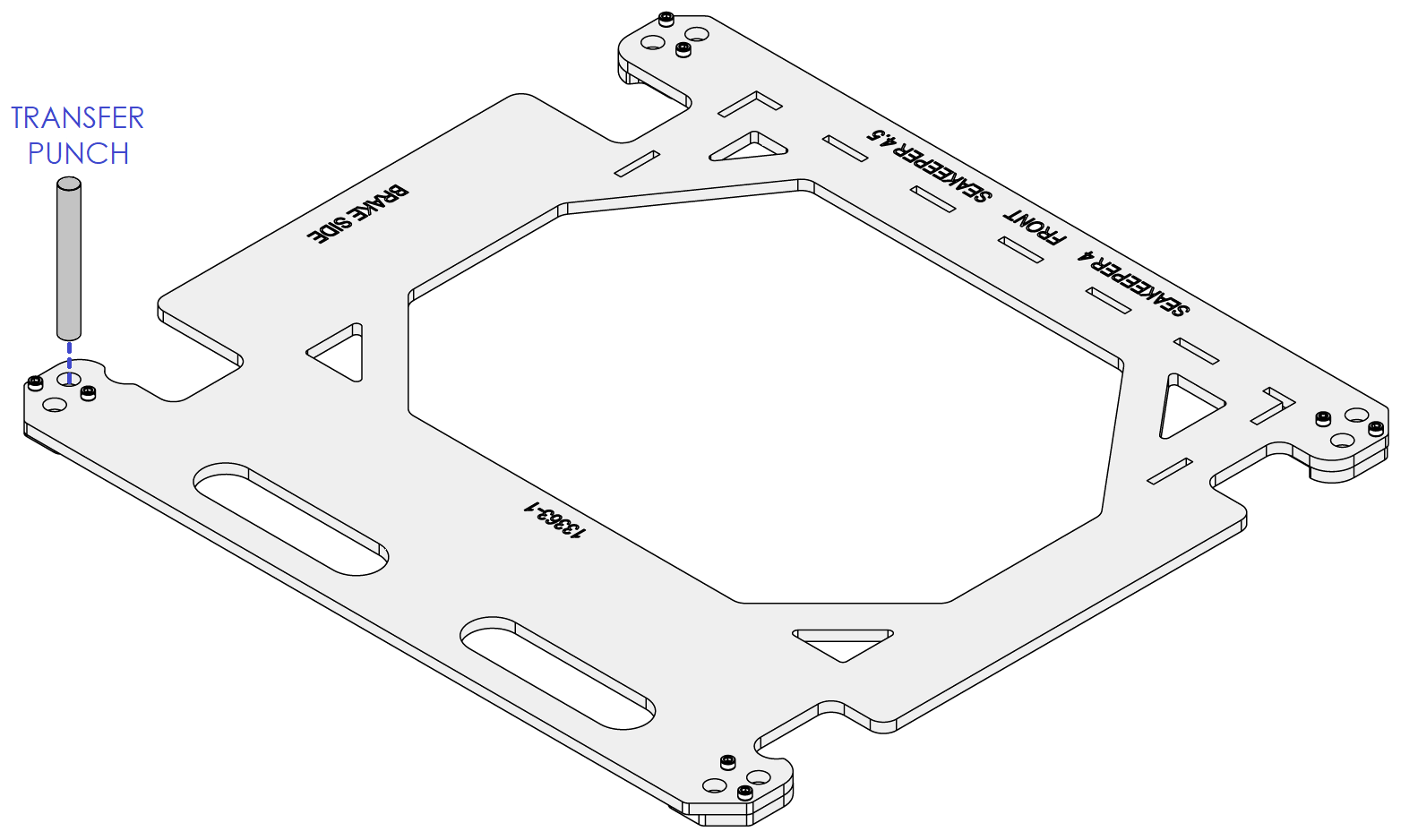
Blind Hole Installation
- Remove Template Fixture and drill eight (8) 0.625 in. (15.875 mm) holes perpendicular to the vessel structure to a minimum depth of 1.25 in. (31.75 mm). Take special care to drill perpendicular to mounting surface. A drill guide is recommended. Remove any impeding obstructions.
- Tap drilled holes for helical thread inserts per documentation accompanying helical thread inserts.
- Install eight (8) M16 – 2.0 X 24 mm threaded inserts into holes in hull structure at drilled and tapped locations using thread insert manufacturer provided installation tool.
- Remove thread insert prong / tang after thread inserts are installed.
- Lower Seakeeper 4 / 4.5 onto stringer over prepared holes.
- Install fastener hardware per installation drawings.
- Torque fasteners to 155 ft-lbs (210 Nm).
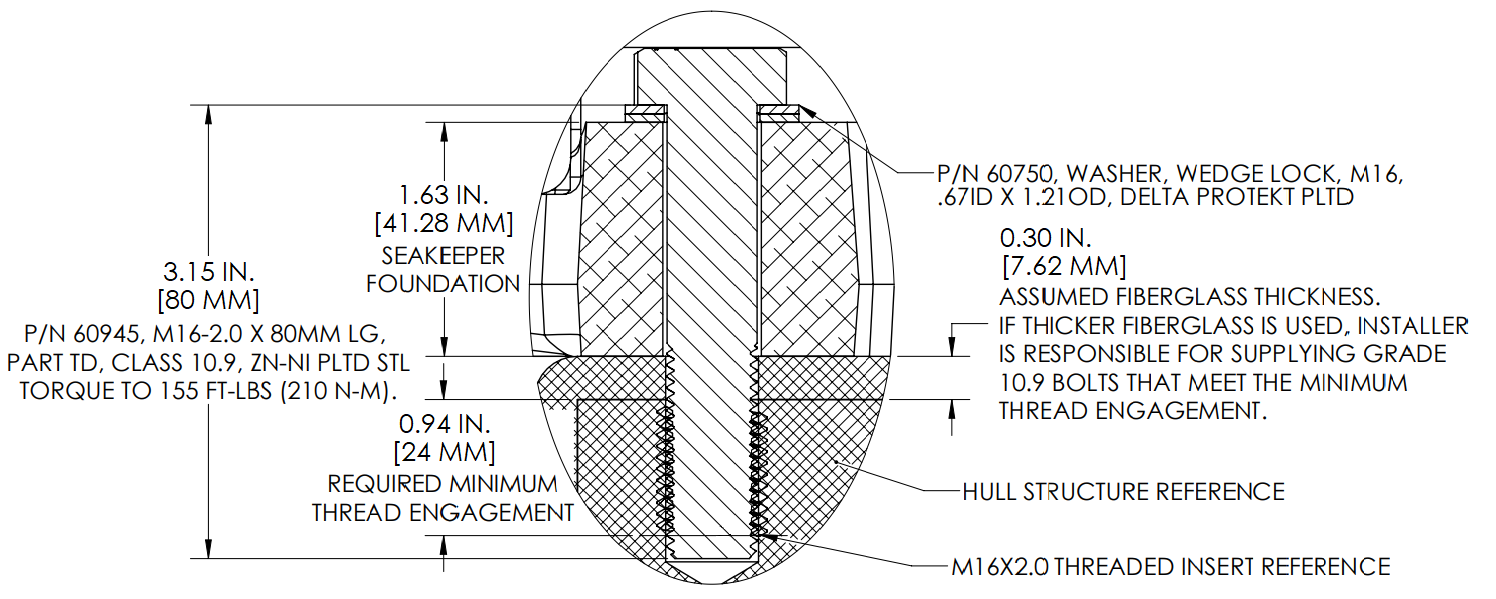
Through-Hole Installation
- Remove Template Fixture and drill eight (8) 0.669 in. (17 mm) ø holes perpendicular to the vessel structure. Take special care to drill perpendicular to mounting surface. A drill guide is recommended.
- Lower Seakeeper 4 / 4.5 onto structure over prepared holes.
- Install fastener hardware per installation drawings.
- Torque fasteners to 155 ft-lbs (210 Nm).
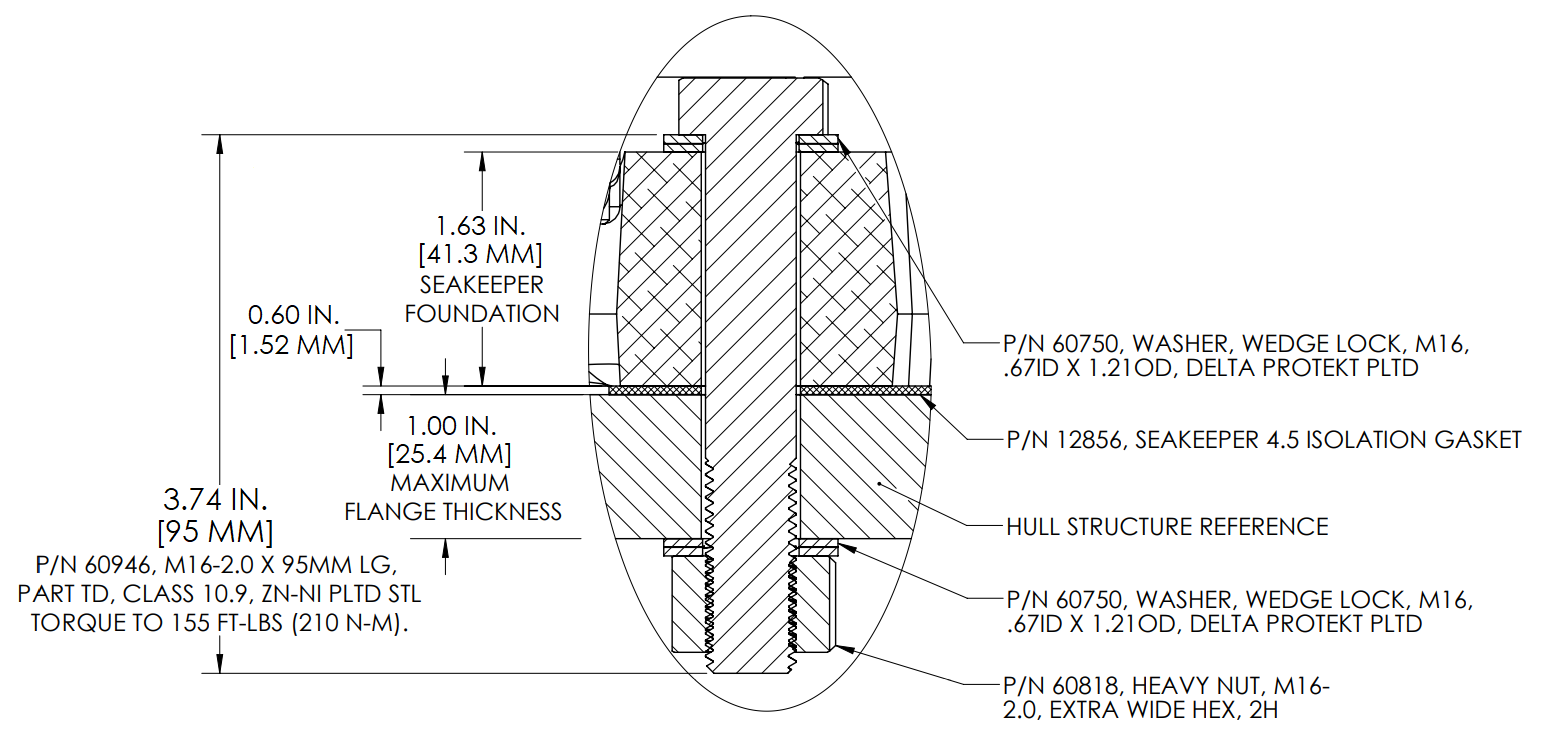
2.3.3 Installation of Seakeeper
- Lower Seakeeper into position onto the hull foundation beams and align over drilled holes. Apply a small bead of marine sealant (e.g., SILI-THANE 803 or equivalent) between mating surfaces of Seakeeper frame and hull structure to prevent moisture wicking into bolt holes.
- For dissimilar metal foundations, locate and position four isolation gaskets onto foundation beams and apply a small bead of marine sealant (e.g., SILI-THANE 803 or equivalent) between both mating surfaces of each isolation gasket where it contacts the beam and the Seakeeper.
- Install mounting fasteners:
- For Blind Hole installations, install the Seakeeper supplied Grade 10.9, Mxx-x X xx mm fasteners to maintain a minimum thread engagement of 0.xx in (xx.xx mm). Apply a moderate coat of nickel-based anti-seize (e.g., SAF-T-EZE nickel grade anti-seize, SBT-4N, or equivalent) to the threads of each bolt and include a small bead of marine grade sealant (e.g., SILI-THANE 803 or equivalent) under each bolt head and washer before installation.
- For Through-Bolt installations, install the Seakeeper supplied Grade 10.9, Mxx-xx X xx mm fasteners with a minimum of 2 threads passing through the nut. Apply a moderate coat of nickel-based anti-seize (e.g., SAF-T-EZE nickel grade anti-seize, SBT-4N, or equivalent) to the threads of each fastener and include a small bead of marine grade sealant (e.g., SILI-THANE 803 or equivalent) under each bolt head and washer before installation.
ADD IMAGES HERE
- Torque all fasteners to XXX ft-lbs (xxx Nm).
- New bolts, matching the Seakeeper specification, must be used for each installation that meet the requirements listed above.
- Proceed to electrical and cooling installation.